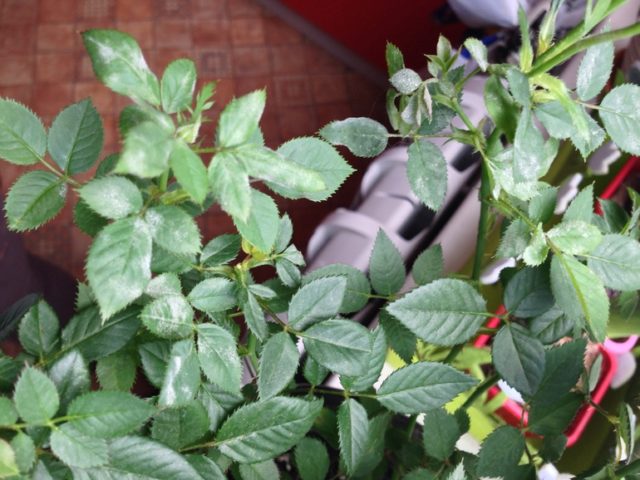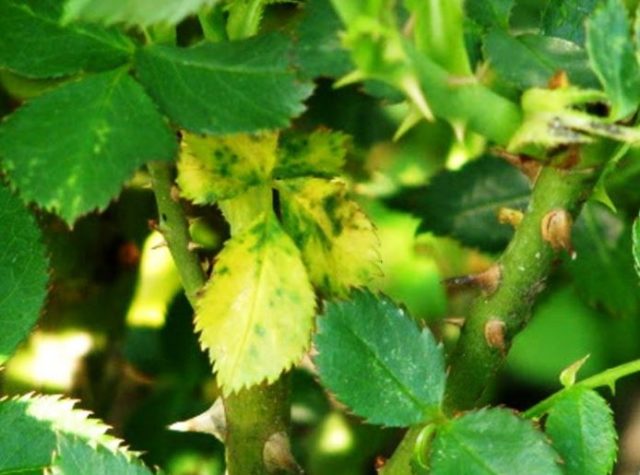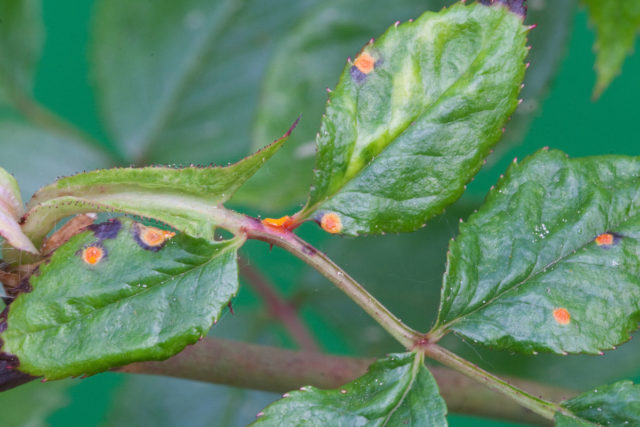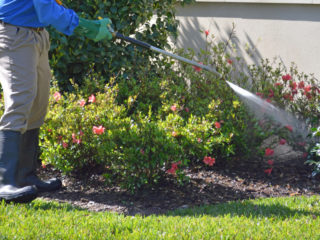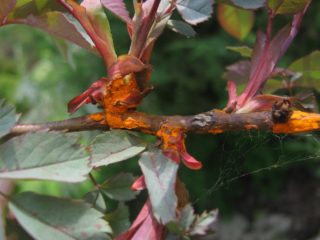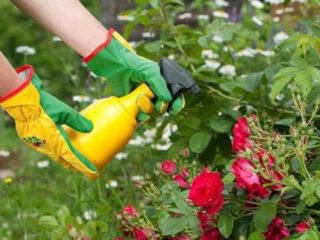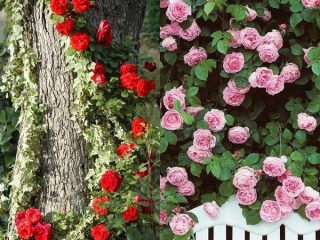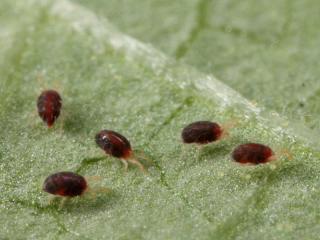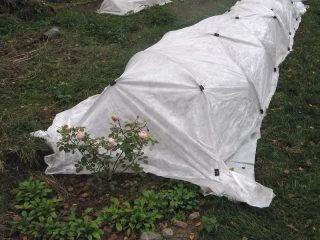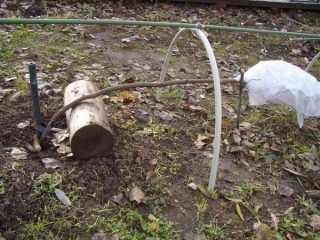Content
- 1 Types of rose diseases
- 2 Fungal diseases
- 3 Bacterial diseases
- 4 Viral diseases
- 5 Root rot
- 6 Non-communicable diseases
- 7 Rose pests
- 8 Rules for processing roses
- 9 How to treat roses against diseases and pests
- 10 House rose diseases and treatment methods
- 11 Prevention and protection of roses from diseases and pests
- 12 Conclusion
Diseases of roses and the appearance of pests have a negative impact on the intensity of flowering. “Queen of the Garden” is a very finicky ornamental crop with weak natural immunity. In order to grow a healthy plant, you need to know the main diseases of roses and their treatment; below, the most common ailments of various varieties are presented with photos.
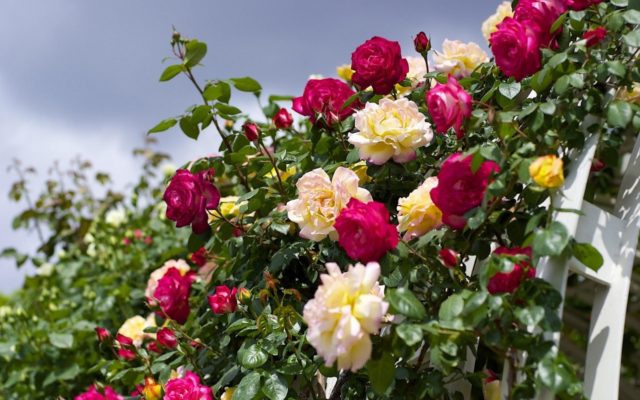
Bushes bloom truly magnificently and beautifully with timely treatment of diseases and elimination of pests
Types of rose diseases
The most common diseases of rose bushes can be classified into main groups:
- fungal;
- bacterial;
- viral;
- root rot;
- non-communicable diseases.
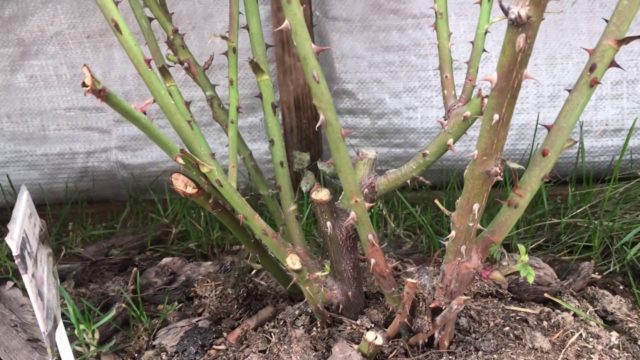
Pathogens of fungal and viral diseases of roses are successfully activated during wintering
Fungal diseases
Fungal diseases of bushes spread very quickly. They affect the root system and above-ground parts.
In order to achieve constant flowering, you should carefully study how to treat rose diseases. In the photo below you can see the main fungal ailments of the “queen of flowers”.
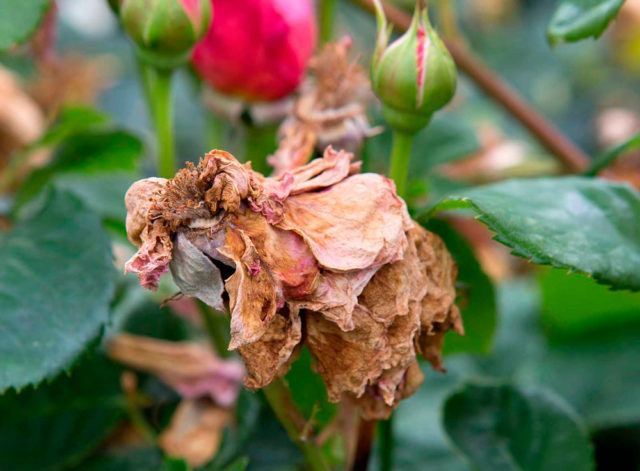
Due to infection with fungal diseases, bushes and buds lose their decorative appeal
Powdery mildew
Powdery mildew is caused by fungi of the genus Sphaerotheca pannosa, which overwinter in plant buds. Powdery mildew develops intensively on young shoots, but this disease can confidently be called rosebud disease.
Massive damage to dry foliage occurs at the height of a dry summer. Healthy leaves quickly curl and dry out. When diseased, the stems become covered with a noticeable white coating, similar to flour.To prevent and treat powdery mildew, the following measures are taken:
- plants are planted in well-drained, sunny areas;
- the planting scheme should facilitate sufficient ventilation of the bushes (30-40 cm for medium-sized varieties, 40-60 cm for tall ones);
- feeding with organic and mineral fertilizers with a high nitrogen content;
- sanitary pruning and timely burning of disease-affected shoots;
- watering exclusively in the morning;
- spraying with a 1% solution of soda and laundry soap.
The use of drugs for rose diseases before and after flowering with an interval of 10-15 days (Fundazol, Topaz, Fitosporin-M) allows you to effectively combat powdery mildew spores.
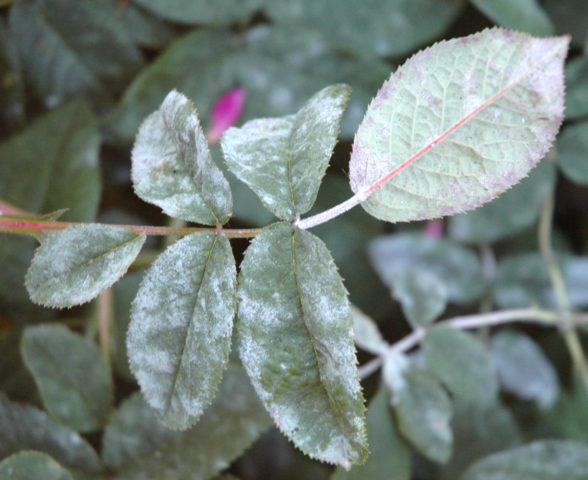
The uniqueness of fungal disease lies in the fact that moisture is not needed for the growth and development of pathogenic microflora
Downy mildew or peronosporosis
The causative agent of rose disease, downy mildew, is the fungus Pseudoperonospora sparsa, which actively reproduces in damp conditions and heavy rainfall. When rose bushes are infected with spores of this fungus, a white powdery coating appears on the underside of the leaves. The upper part of the leaves is painted in red-brown spots with a purple tint, which multiply from the edge of the leaf to the central vein.
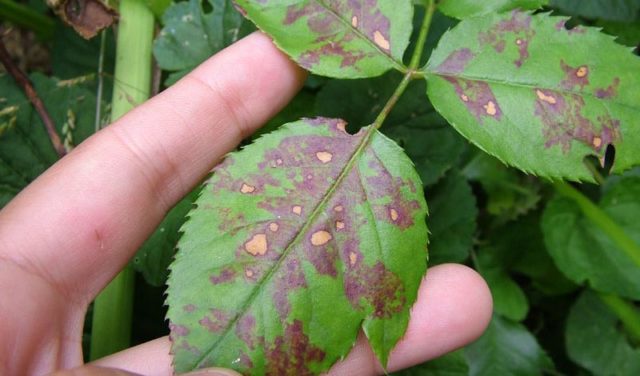
With downy mildew, the petals on the buds turn black and fall off
Rust
Rust is the second most common disease (after powdery mildew) that affects flower bushes. The fungus can be recognized by its characteristic yellow-orange, bright spores on the lower foliage, stems, and young shoots. To prevent the development of such a rosebud disease, it is necessary to take preventive measures:
- correct choice of landing site;
- compliance with the planting scheme;
- timely feeding with nitrogen-containing preparations;
- morning watering.
When rust appears, the bushes are treated with fungicides against the most common diseases of rose shoots: Fitosporin-M, Topaz.
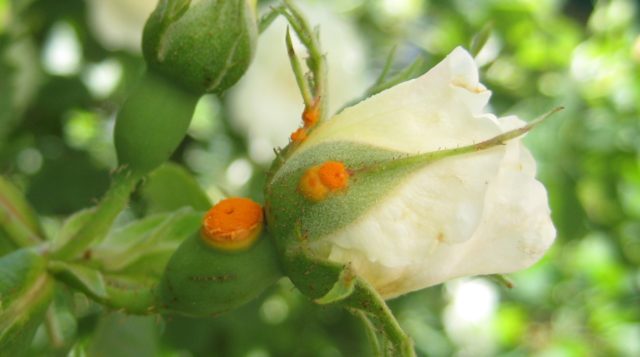
On bushes, rust disease can manifest itself on all above-ground parts of the plant.
Black spot or marsonina
The cause of black spot disease of flower bushes is infection with the fungus Marssonina rosae. The disease appears in early spring as round or star-shaped spots of dark brown, purple and white, which turn black over time. The foliage gradually falls off, the plant loses its ability to resist frost. The most commonly susceptible to the disease are tea roses, climbing roses and polyanthus. Prevention and treatment of marsonina consists of the following measures:
- planting in well-lit areas with sufficient drainage;
- collecting and burning fallen leaves in the fall is the main source of dislocation of fungal spores;
- loosening the soil at the end of autumn, which contributes to the freezing of the fungus in winter;
- alternate treatment with zinc- or manococeb-containing fungicides (Skor, Topaz, Profit Gold).
The photo below shows what black spot disease of roses looks like:

Necrosis during the disease covers the foliage, gradually spreading to the central stem and young shoots
Rusty brown spot or ceproscorosis
The disease rusty brown spot (ceproscorosis) is manifested by reddish-brown necrosis. The diameter of the spots is up to 6 mm.
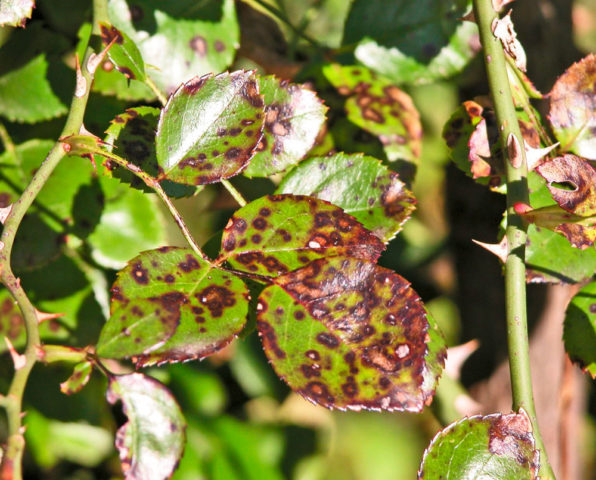
The causative agent of rose disease, ceproscora blight, is a fungus of the Cercospora rasiola family.
Whitish spot or septoria
The disease whitish spot (septoria) occurs when flower bushes are infected by the fungus Septoria rosae.Small whitish specks with an outlined black rim appear on the foliage.
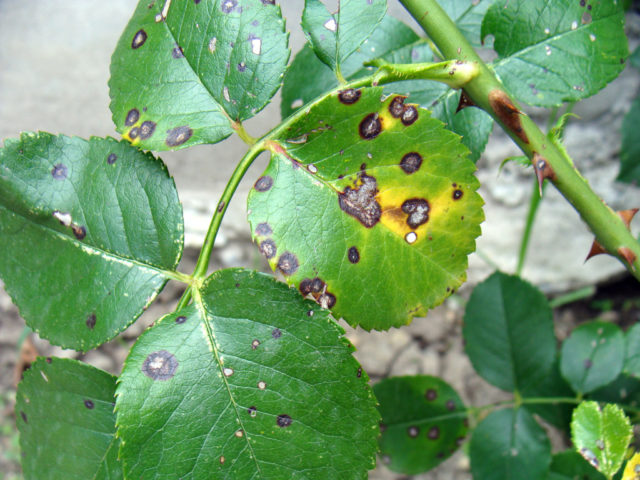
Whitish spot is a disease that can be treated using new generation fungicidal drugs
Purple spot or sphacoeloma
The causative agent of the disease of flower bushes, purple spot (sphaceloma), is the fungus Sphacelomarosarum. Its presence can be noticed in the form of small “freckles” of a black-purple color.
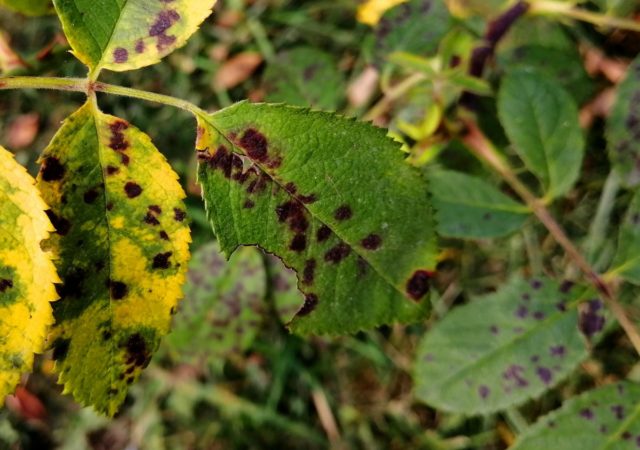
Treatment methods for purple spot disease are the same as for marsonine
Branch burn
Infectious burn refers to fungal diseases of bushes. It is provoked by the pathogenic fungus Coniothyrium wernsdorffiae. Rose disease manifests itself in early spring as extensive brown spots with a reddish-brown border in the area of the shoots. The bark cracks and deep wounds appear on the stems. For prevention, it is necessary to cover the flowers for the winter and not overfeed them with potassium and nitrogen fertilizers.
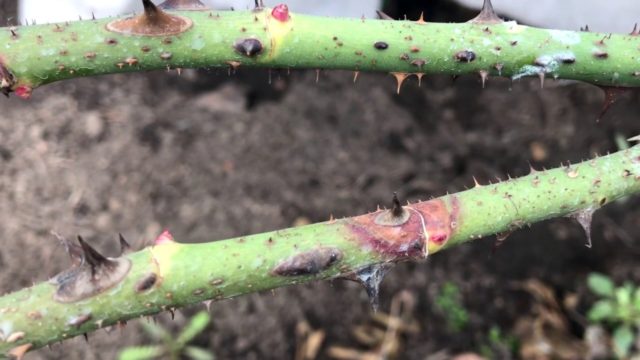
Bushes affected by infectious stem burn cannot be cured; the plant should be burned
Cytosporosis
The causative agent of rose disease cytosporosis is considered to be the fungus of the same name. Convex brown tubercles appear on the bark, which eventually become wet and peel off. The shoots die off and the plant gradually dies.
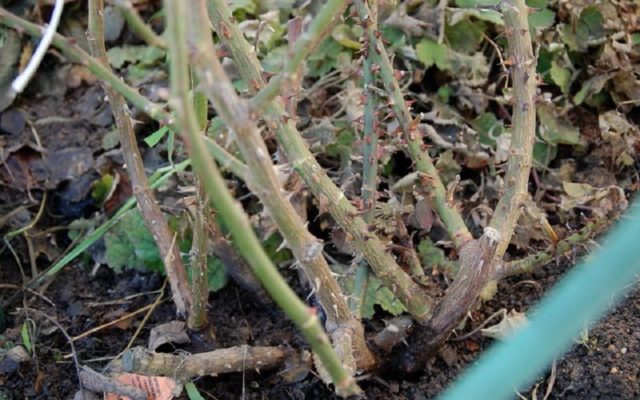
To combat and prevent cytosporosis disease, modern fungicides are used before bud break, in early spring.
Gray mold or botrytis gray
The causative agent of rose disease gray rot is considered to be gray botrytis, which often spreads to plants from grape, tomato and peony bushes. Botrytis spores are especially dangerous in damp but fairly cool weather. A smoky-gray coating first appears on the foliage and shoots, which later becomes black spots.Rose petals are covered with round spots of a lighter shade. After a short period of time, the entire flower “dresses” in a gray “outfit” from the disease and completely rots.
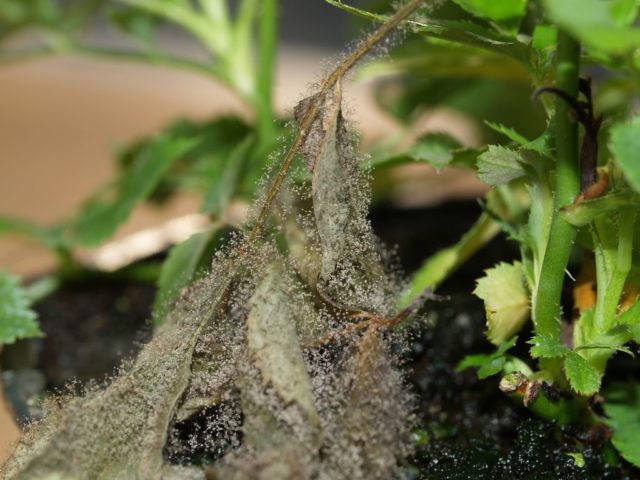
If gray rot is detected, the affected shoots are completely cut off to the level of the second healthy bud.
Bacterial diseases
The bacterial diseases of roses presented in the video are practically incurable. To prevent rose bushes from becoming infected with such diseases, it is necessary to promptly prune the plants in calm and dry weather, use sterile gardening tools, and monitor the condition of the seedlings when purchasing.
Rose bushes do not always have innate immunity from disease.
Bacterial root cancer
The disease bacterial root cancer can be recognized by lumpy growths on the root collar, which turn black over time. With the main symptoms of infection by the Rhizobium bacterium, the root rots. For treatment, complete disinfection with a 1% solution of copper sulfate for 3-4 minutes is most effective.
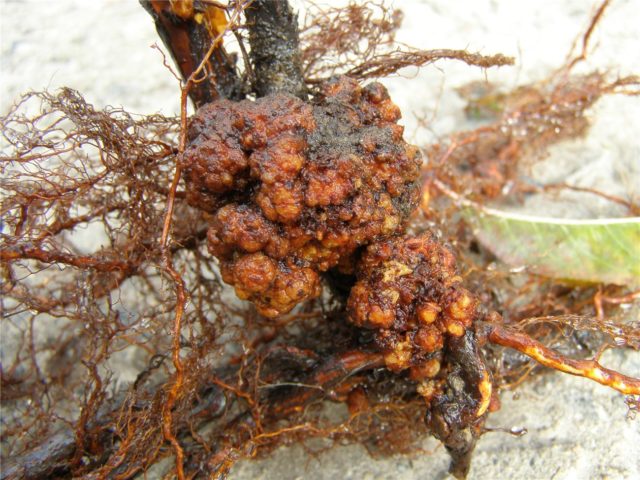
Rhizobium bacteria, which cause bacterial root cancer, can remain viable in the soil for about 3-4 years
Bacterial stem cancer
Bacterial stem canker disease is caused by the rod-shaped bacterium Pseudomonas lilac. The bark on the stems becomes covered with brown spots, flakes off and dies, forming ulcers. Watery dark spots appear on the leaves, which fall out in dry weather, forming holes with dark edges. If bacterial cancer of the stems is detected, the affected shoots are completely removed, the bush is disinfected with 6% copper sulfate, and the cut sites are treated with an oliphos-containing composition.
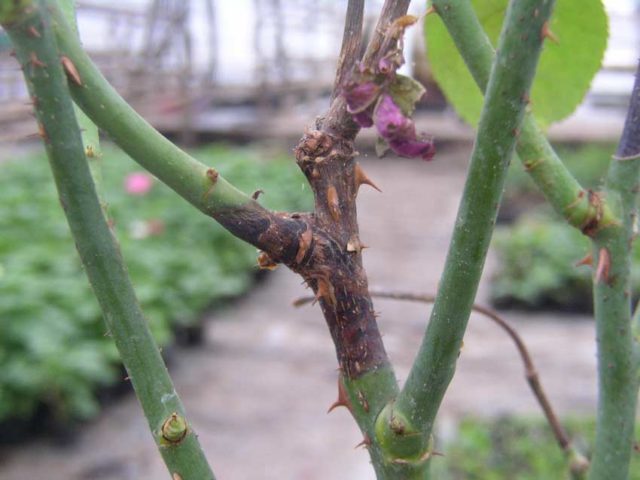
For preventative purposes, roses are treated with Bordeaux mixture or other bactericidal agents in early spring.
Viral diseases
Viral diseases of roses pose a great danger. The fight against them is an integral part of agricultural technology.
Viral wilt of roses
Viral wilt is a dangerous disease that begins to appear after plant grafting. The leaves become deformed, dry out, and the buds and flower stalks do not look healthy. As a measure to combat this disease, pruning the affected shoots to the third healthy bud and burning plant residues are used.
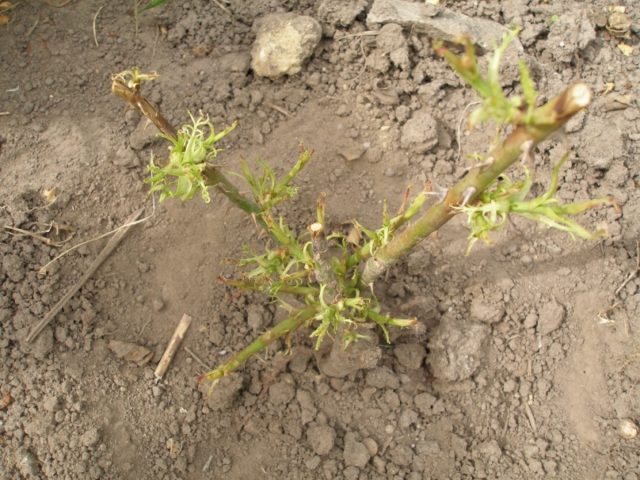
At first glance, viral wilt disease is very difficult to diagnose because the plant simply lags in growth
Virus mosaic of rosehip
The Arabis Mosaic virus (ApMV) disease most often affects old, weakened, frost-damaged bushes. Some gardeners note the presence of huge colonies of thrips, which are carriers of the disease. Mosaic yellow-milky patterns on rose foliage are the main signs of rhea virus mosaic. The affected parts are cut off and burned, the bushes are treated twice with immune preparations and modern insecticides.
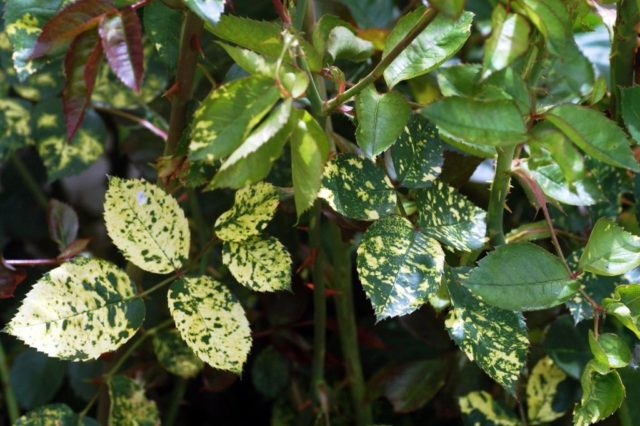
In case of local infection with the rhubarb mosaic virus, the bush is completely eliminated
Jaundice, rose leaf stripes and VKP
Jaundice, leaf stripe and ringspot virus (RSV) are very dangerous viral diseases that can affect plants when using non-sterile gardening tools and with weakened immunity. Viral diseases are often caused by numerous pests.In order to effectively combat rose diseases associated with viruses, it is necessary to promptly implement a set of preventive measures for known pests of this garden crop.
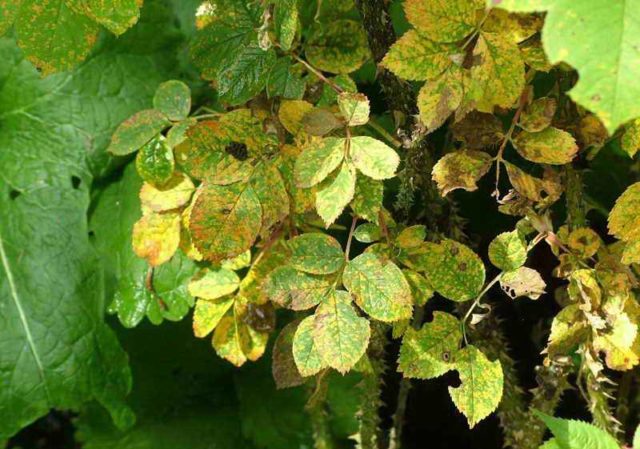
Bushes affected by viral diseases lag behind in development and flowering
Root rot
Root rot is the most common flower disease. They can be provoked by frequent watering, incorrect feeding schedule, a lot of weeds in the garden bed, or leftover leaves from last year.
Tracheomycosis wilt
Tracheomycosis wilt is an unpleasant disease of rose bushes that is caused by the fusarium fungus. Most often, a pathogenic fungus attacks a crop due to incorrect agricultural practices:
- when placing the rose garden in heavy shade;
- with close proximity to groundwater;
- in the absence of drainage.
Active spores of pathogenic microflora affect the vessels that deliver basic nutrition to the root collar. Shoots and leaves wither and dry out, the plant dies. To combat the disease of rose bushes, tracheomycosis wilt, a thorough treatment of the root system in a 3% solution of potassium permanganate or the modern drug Gamair is used.
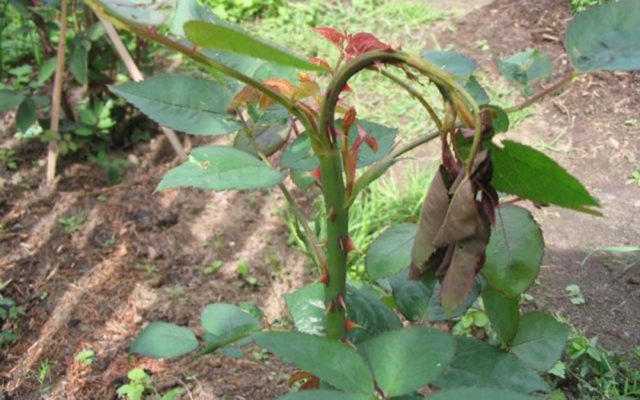
Fusarium fungal spores, which cause the bush disease tracheomycosis wilt, persist in the soil for several years
White sclerotial rot
White sclerotial rot is a dangerous disease of rose bushes, visually manifested on the root collar. Appearance can also signal the onset of the disease:
- weak flowering;
- slow development of shoots;
- premature wilting of foliage and shoots.
A white, cotton-like coating appears on the root collar, which eventually spreads to the stem.
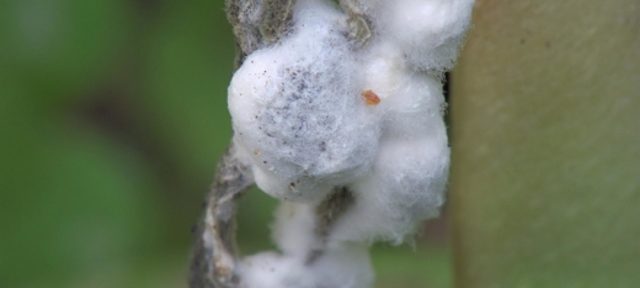
There are no ways to combat this disease of rose bushes, except for culling and complete destruction of infected bushes
Non-communicable diseases
Non-infectious diseases of rose bushes can be caused by various reasons that do not depend on the epidemiological state of the area. They can occur due to improper agricultural practices during planting, weather, poor immunity, metabolic disorders and the process of photosynthesis, and unfavorable soil composition. Such non-infectious diseases of climbing roses and other species are often encountered.
Chlorosis
Chlorosis is an unpleasant disease of rose bushes, which is manifested by a change in the color of the leaves to pale yellow. Over time, the growing season noticeably slows down, the leaf blades dry out completely. The disease occurs for the following reasons:
- inconsistency in the acid composition of the soil;
- incorrect selection of fertilizers;
- insufficient watering.
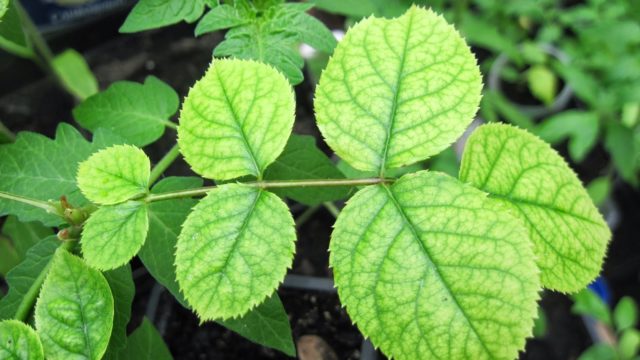
To prevent the development of chlorosis disease, you should fertilize and water rose bushes in a timely manner.
Sunburn
Sunburn is a dangerous non-infectious disease of rose bushes, which is caused by an increase in air temperature under the influence of bright sunlight. Foliage, young shoots, and buds turn red-brown and become hard.

To prevent direct sunlight, in hot weather young bushes should be slightly shaded
Physiological aging
Physiological aging of rose bushes is diagnosed by the following signs:
- regrowth of rootstock shoots;
- dying and noticeable thickening of stems;
- record low number of buds.
The development of fungal, viral, and bacterial diseases is also a sign of aging flowers.
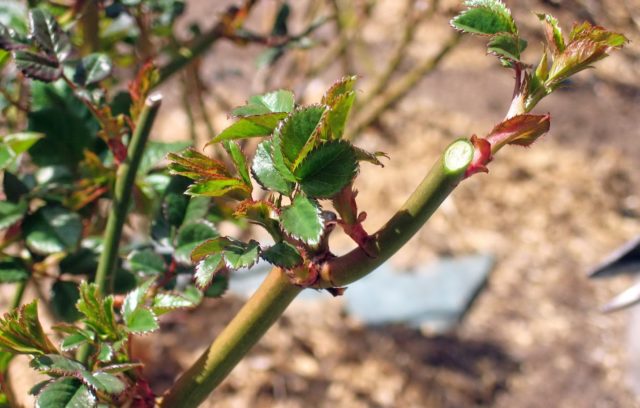
If all the signs of physiological aging of roses are obvious, it is necessary to take care of rejuvenation and replacement of the plant with a new one
Nitrogen deficiency
The lack of such a macronutrient as nitrogen is manifested by slower growth. Shoots and foliage become noticeably smaller, as the process of producing chlorophyll, a green pigment on the formation of which the process of photosynthesis is based, is inhibited. Pale leaves are not able to provide adequate nutrition to the plant, so flowering gradually stops.
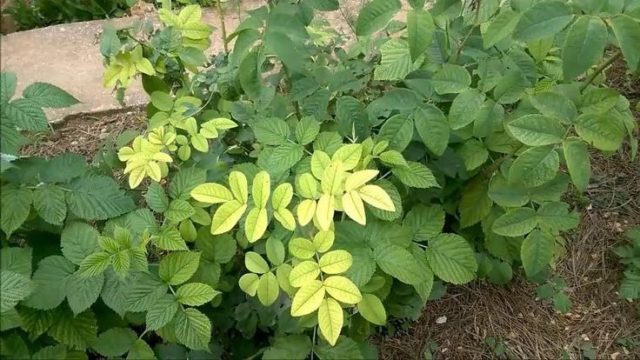
With a lack of nitrogen, rose bushes tolerate winter frosts worse and can be affected by fungal diseases
Potassium deficiency
If there is insufficient amount of potassium in complex fertilizers, the leaves of roses become covered with red pigment, which greatly inhibits their development. Young leaves most often suffer from a lack of potassium, since chroloplasts (green plastids) with a deficiency of this macroelement turn into chromoplasts (red-orange plastids).
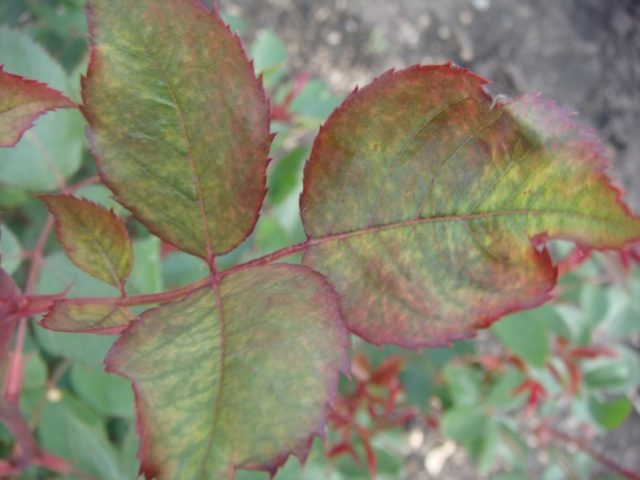
The disease necrosis of leaf plates is most intense along the edges
Phosphorus deficiency
With a small amount of phosphorus in the fertilizer, the ventral surface of the foliage turns red, and the lower surface becomes dark green. The leaf blades are small in size and fall off very quickly.
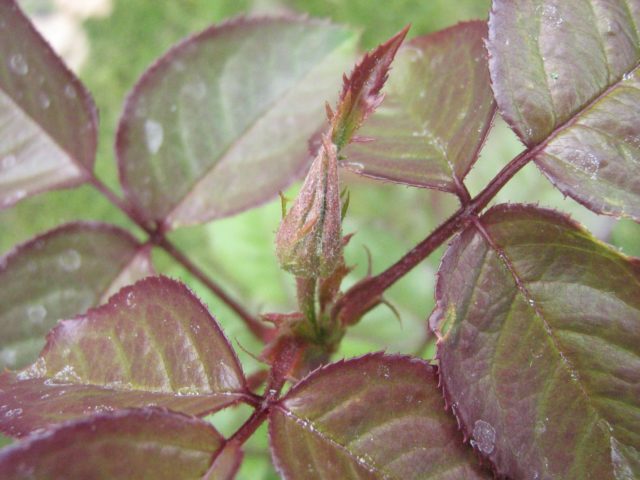
The lack of phosphorus for rose bushes is manifested by poor bud formation
Iron deficiency
Iron is a useful trace element for feeding roses. It is best to treat the above-ground parts of plants with mineral fertilizers with sufficient iron content in early spring at the beginning of the growing season (ferric citrate, ferrous sulfate)
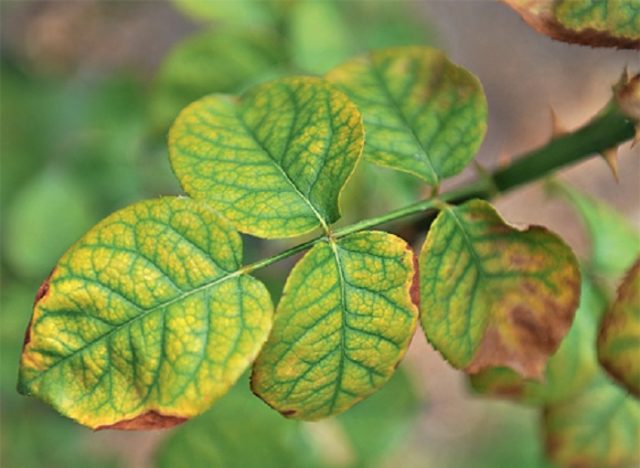
With a lack of iron, the green apical leaves turn yellow, dry out, and are more susceptible to diseases and pests
Magnesium deficiency
Magnesium is a valuable microelement that is part of the green pigment, which is responsible for the process of photosynthesis in the light. When it is deficient, rose bushes lose their foliage. Necrosis progresses along the central vein.
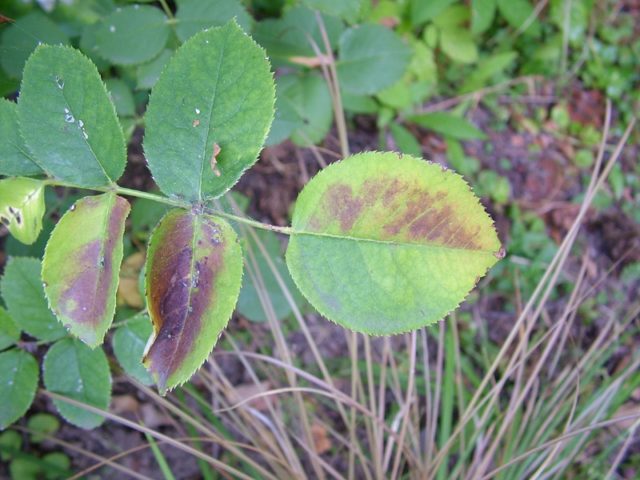
A balanced amount of magnesium in complex mineral fertilizers is the key to beautiful, glossy foliage on roses
Manganese deficiency
Manganese deficiency affects leaf tissue located between the veins. A deficiency can occur due to diseases of the root system, when the plant receives microelements as part of complex preparations, but due to illness (for example, rhizome cancer) cannot absorb them.

Most often, adult rose bushes suffer from the disease.
Chemical burn of roses
Rose bushes can get a chemical burn due to frequent use of insecticides, fungicides, pesticides, or when the permissible concentration is exceeded. In some cases, troubles can occur due to violations of agricultural technology: treatment with insecticides at air temperatures above + 25 ⁰C.
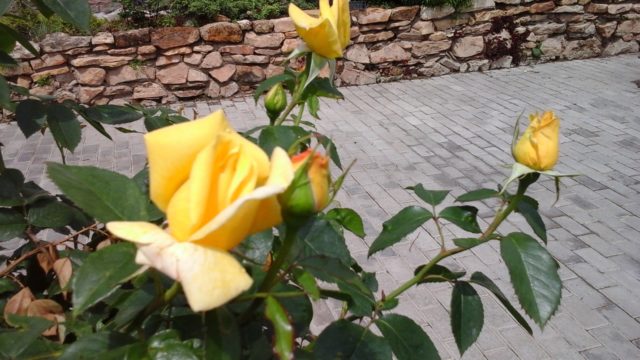
To protect rose bushes from chemical burns, you should strictly follow the instructions for using chemicals.
Rose pests
A large number of insects settle on rose bushes throughout the growing season. Some of the most common pests that attack roses include spider mites and aphids.
Spider mite
The spider mite is an arachnid insect that most often settles in rose gardens in hot, dry weather, from + 29 ⁰C. During the growing season, the pest can produce up to 5 generations. To combat insects, colloidal sulfur, Iskra-M, Fufanon are used.

The pest manifests itself by the formation of light spots on rose leaves followed by drying out
Golden bronze
The golden bronze beetle, or “chafer beetle,” eats rose flowers during the budding period, as well as peduncles and young shoots. As a result of the pest's activity, rose bushes completely lose their decorative appeal. Since beetles hide in the soil at night, in the evening the soil near the plants can be filled with insecticide solutions (Diazinon, Medvetox, Prestige).
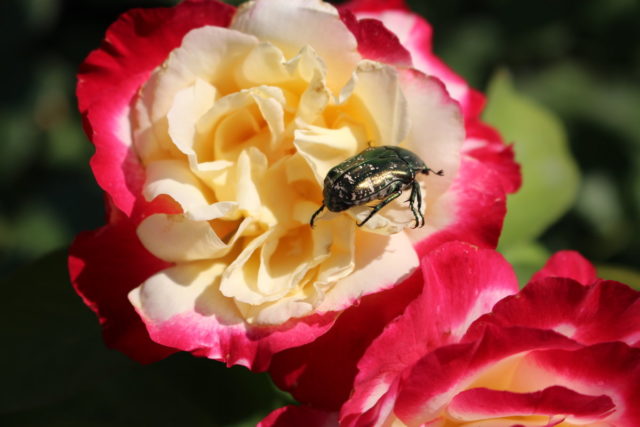
Usually pests are collected and destroyed in the early morning, when they sit motionless on rose buds
Roseate sawflies
Rose sawflies feed on foliage and young shoots of roses. Treatment of rose gardens in early spring with organophosphorus preparations (Antara, Inta-Vir, Actellik) is most effective against pests.
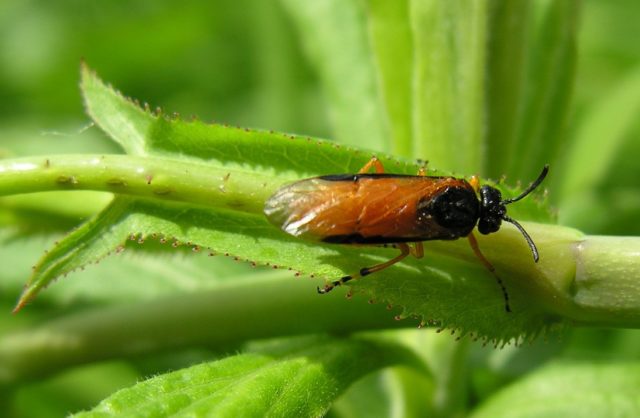
Pests penetrate the inside of the shoot, after which the branch completely dies
Aphid
Aphids are one of the most common parasites. The pest reproduces throughout the summer. The insect sucks out the juices, depriving the plant of its vitality. Many fungal diseases of roses and aphids are inextricably linked, since the parasites secrete a sweet substance, which is considered an ideal environment for the proliferation of pathogenic microflora.

To destroy pests, you can use traditional methods (treatment with soap solution, wood ash, ammonia)
Cutworm larvae
Cutworm caterpillars are nocturnal. Pests live in the soil. Small larvae settle on the underside of green leaves and feed on sap.
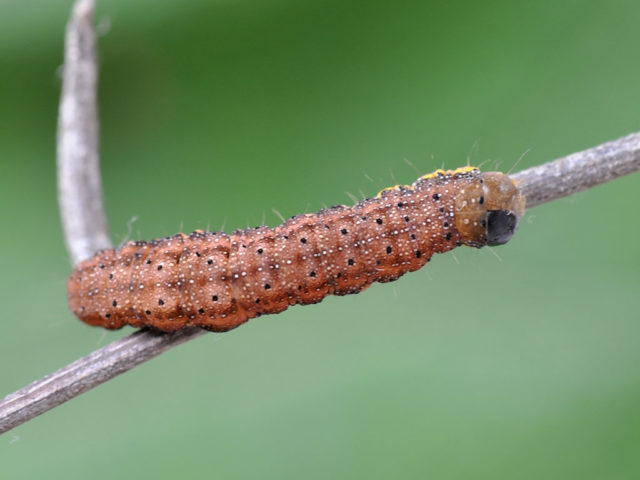
The activity of cutworm larvae causes invasion - drying and falling of rose leaves
Leaf Cutter Bee
A leaf cutter bee cuts regular shaped oval pieces from delicate rose leaves.Like scissors, pests on rose leaves carefully cut the leaf plates necessary for building their own nest.
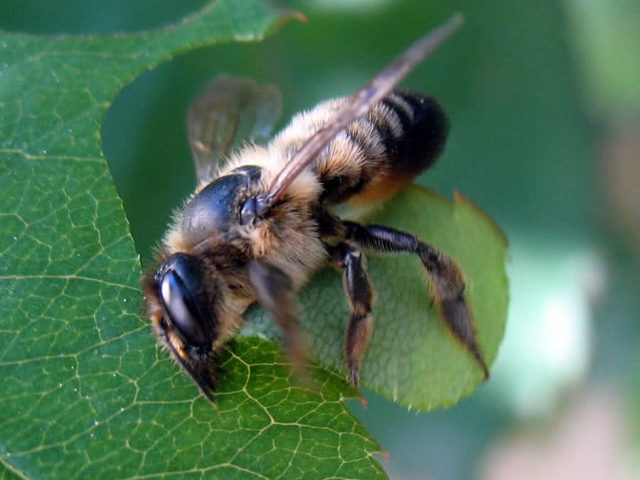
To combat the leafcutter bee, systemic drugs are used
Rules for processing roses
Modern means for treating ornamental plants require proper agricultural technology:
- removal of seasonal shelter when a stable average daily air temperature is established not lower than + 5 ⁰C (in the daytime up to + 10 ⁰C, in the evening up to - 4 ⁰C);
- visual inspection of rose bushes 3 days after opening (wintering);
- unhilling by hand, washing off the remaining soil from the trunks with warm water;
- pruning dry, fattening, weak, frozen, rotting, as well as shoots and branches developing inside the bush on the 4th day after removing winter protection using disinfected garden tools;
- cleaning the area where the rose garden is located from debris and fallen leaves;
- The actual time for treatment is morning and evening hours, when the plants are maximally protected from the scorching rays of the sun;
- The ideal weather is a warm, windless day.
Considering some of the “capriciousness” of garden roses, experienced gardeners recommend mandatory spring treatment of bushes with copper sulfate (spraying to destroy pathogenic microflora) immediately after pruning the branches.
After this, only a day later you can feed the plants with complex preparations, and after another week you can treat the rose garden for the first time against pests.
The second pest control treatment is carried out on the 20th day.
In addition, the gardener needs to take care of his personal safety:
- rubber shoes on feet;
- waterproof cape or raincoat;
- safety glasses and hat;
- respirator.
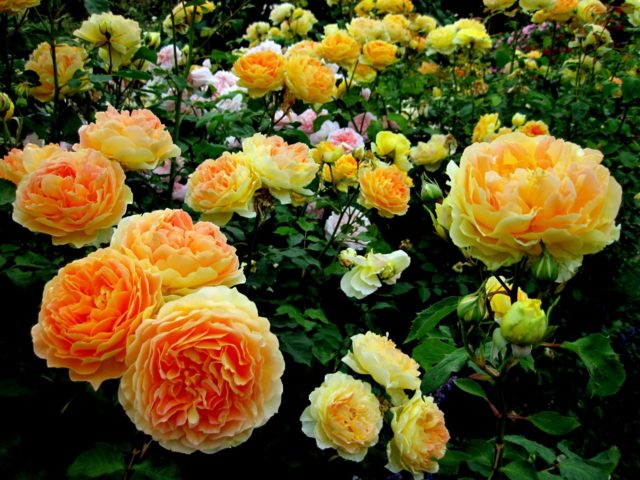
Proper use of modern drugs will allow you to get lushly blooming rose bushes without diseases
How to treat roses against diseases and pests
Not all modern means are suitable for the “queen of flowers”. Especially during the budding period, you should be careful when choosing products, since flowers attract bees and it is very important to spray the rose garden with safe products.
The scheme for treating roses against diseases and pests is simple. For example, the most accessible and inexpensive method is treatment with 0.4% copper oxychloride or a mixture of copper (3%) and iron sulfate (1%) in early spring (before shoot growth). This method of agricultural technology copes well with fungal diseases, but negatively affects plant growth. The norm of the drug for prevention is 100 g of vitriol per 10 liters of water.
The best way to treat roses against diseases and pests in early spring
Treating roses in the spring against diseases and pests is one of the mandatory agricultural techniques in terms of comprehensive care.
In early spring, the first root feeding with the following organic and biologically active preparations is recommended:
- chicken droppings;
- urea;
- a mixture of potassium sulphide and superphosphate.
Liquid preparations are distributed onto the root circle, directly onto the ground by spraying.
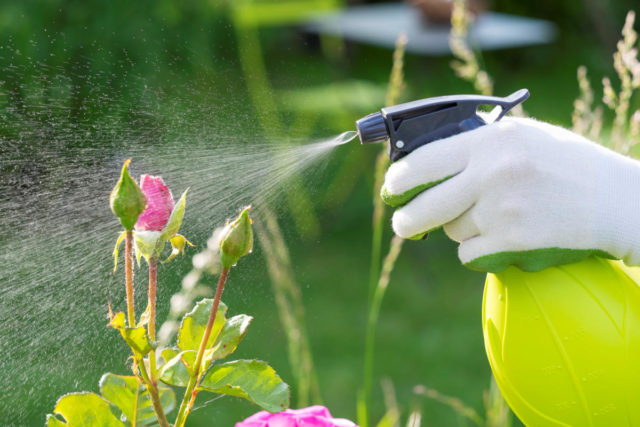
The solution is diluted in the required proportion, mixed thoroughly, and a fine drop nozzle is placed on the spray bottle.
Insect control
During the phase of active shoot growth, it is recommended to use chemical insect control agents, such as Fitoverm, Iskra-Bio.
Before the buds open and the start of budding, Akarin, Confidor, Aktara are most effective.
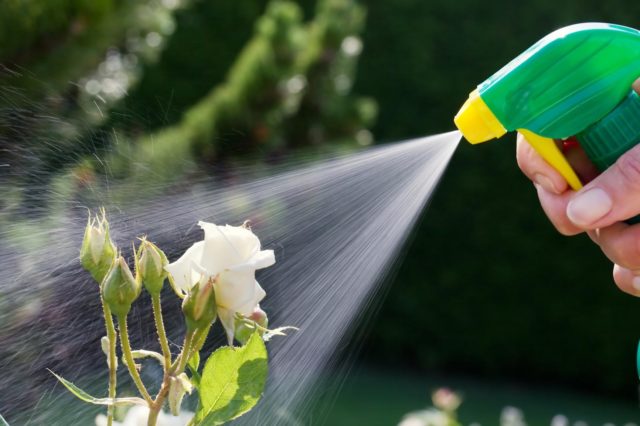
During the completion of the leaf plate deployment process, it is allowed to use drugs such as Nitrafen
Disease Control
Many chemicals have a prolonged effect, accumulate in plant tissues, and are safe for earthworms. In the spring, for prevention, roses should be treated with antifungal drugs and biological disinfectants, such as copper oxychloride, Kuprolux, Abiga-Pik, HOM, Fitosporin.
If real signs of disease appear, rose bushes can be treated with contact or systemic fungicides: Makim-Dachnik, Horus, Skor, Fundazol.
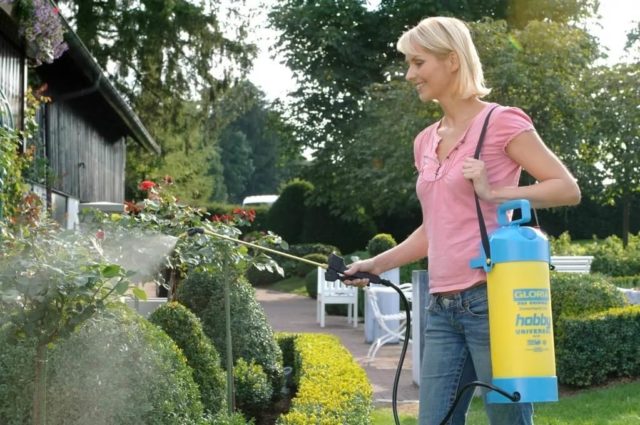
The drugs should not be mixed or used together; when using, you should carefully study the instructions
Traditional methods are quite effective in combating rose diseases:
- manure-ash mixture for powdery mildew (0.2 kg of wood ash, 1 kg of cow manure, 10 liters of water, infuse for 7 days);
- fresh juice and milkweed extract for rust (fresh juice is applied to “rusty” spots on the foliage of roses, or 2 kg of milkweed leaves, stems and roots are poured into 10 liters of warm water and infused for 24 hours).
The interval during the spring treatment of roses against pests and diseases with various means should be at least 2 weeks.
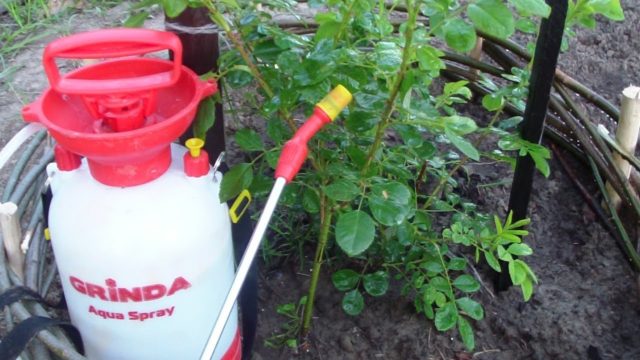
The sooner the problem is identified and treatment started, the faster the recovery process will take place.
How to spray roses against diseases and pests in summer
On summer days, rose bushes are most often attacked by spider mites, which can be gotten rid of by regular irrigation with water. In case of serious danger, plants can be treated with modern insecticides.
If the summer is rainy and stormy, you can use drugs such as Funginex for mold, Tilt for rust and Cuprozan for fungi to prevent diseases.
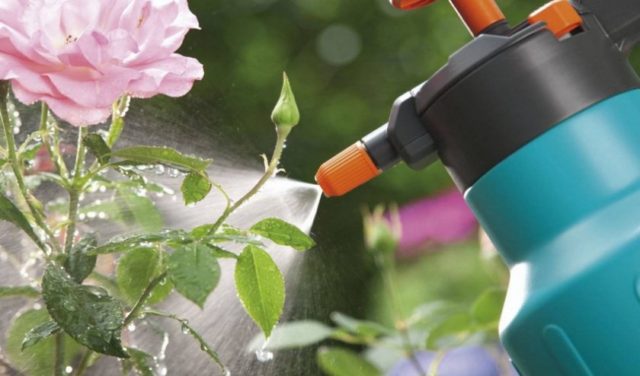
Polycarbocin is ideal as a complex remedy for the summer treatment of roses against many diseases.
How to treat roses against all diseases and pests in the fall
Autumn processing of rose bushes is included in the mandatory agricultural technology plan, since at the end of the season the plants are prepared for wintering.
Experts distinguish several stages:
- First, after the roses have finished flowering, treatment with a solution of wood ash is indicated (at the rate of 1.5 kg of ash per 5 liters of water). The mixture is boiled for 30 minutes, settled, cooled, and 1 tbsp is added. l. salt, 1 tbsp. l. turpentine, 200 ml of liquid soap. Add water to 15 liters. The prepared mixture is sprayed onto the shoots. The classic treatment of the first stage consists of spraying with Fitosporin, which is effective against most diseases of roses.
- The second is spraying with a 3% solution of iron sulfate, and after a few days - with a 1% mixture of Bordeaux mixture.
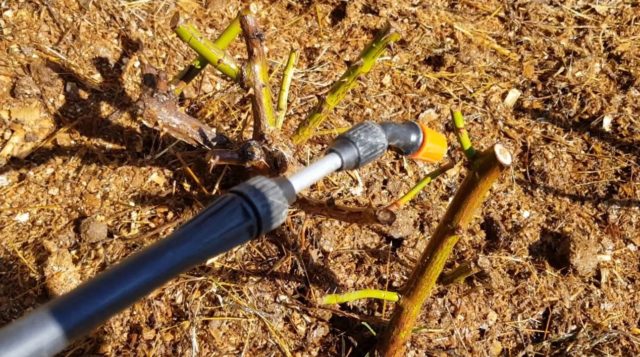
Autumn pest control will prepare rose bushes for the coming cold weather
House rose diseases and treatment methods
Household miniature roses can be affected by fungal and bacterial diseases, like their garden relatives. The most common diseases of indoor roses are:
- Powdery mildew - white coating on leaf blades and stems. The green parts of roses dry out and fall off. Very often, the cause of powdery mildew can be a lack of fresh air, frequent watering, or close proximity to other indoor plants.
When the first signs of disease are detected, a rose in a pot should be treated with drugs such as Fundazol and Topsin
- Downy mildewand is manifested by the formation of a white coating on the underside of the leaf.
The upper part of the leaf blades of roses becomes covered with yellow spots due to downy mildew.
- Rust on indoor roses can be identified by brown-orange pustules on various parts of the plants. Spots may appear due to excessive moisture in the soil and the shoots themselves. When watering roses, the settled water must be poured, avoiding contact with the shoots.
Modern fungicides effectively control rust on indoor roses
If the rules of agricultural technology are violated, indoor “beauties” can be attacked by pests such as spider mites, aphids, and thrips.
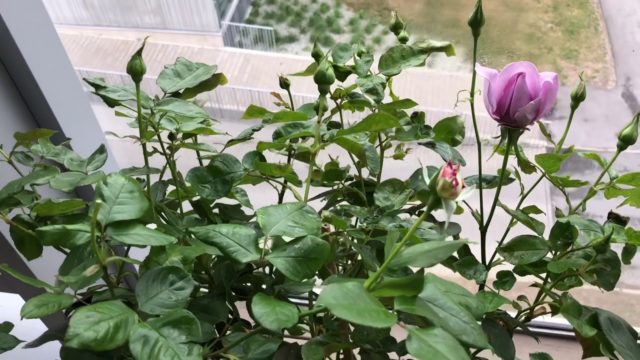
Vermitek, Fitoverm, Apollo show sufficient effectiveness in the fight against parasites on indoor roses
Prevention and protection of roses from diseases and pests
To protect the rose garden from diseases and pests, gardeners very often use traditional methods of control. Treatment with solutions prepared with your own hands will help protect rose bushes from death:
- tobacco solution;
- wormwood;
- hot pepper;
- sorrel rhizomes;
- soap compositions.
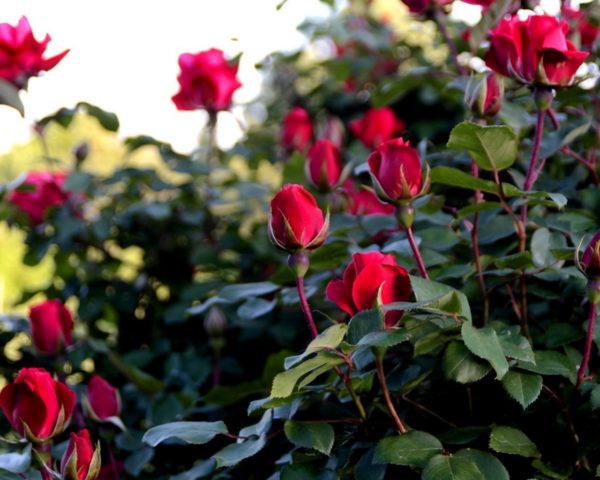
Folk remedies for controlling diseases and pests on rose bushes will not harm bees and other insects
Plants that protect roses
Close proximity to some ornamental and garden crops will help repel pests. The reason is the smell emitted by the foliage or inflorescences of such plants:
- marigold;
- calendula;
- sage;
- lavender;
- garlic;
- spurge.
Marigolds planted near roses effectively repel ticks and nematodes with their rich wormwood aroma.Aphids and ants will never attack roses if lavender bushes bloom nearby or an inconspicuous calendula grows. Euphorbia will help get rid of voles.
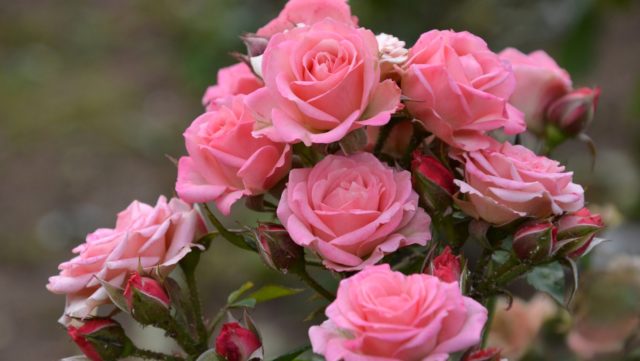
Experienced gardeners have noticed that close proximity to garlic will save rose bushes from the harmful effects of viral diseases
Conclusion
Diseases of roses and major pests provoke a loss of decorativeness. Most often, the cause of problems is unfavorable weather conditions: excessive heat, prolonged drought, or, conversely, cool, rainy and damp summers.
